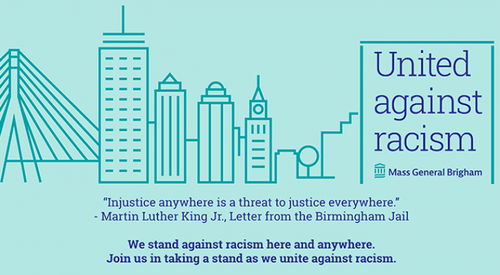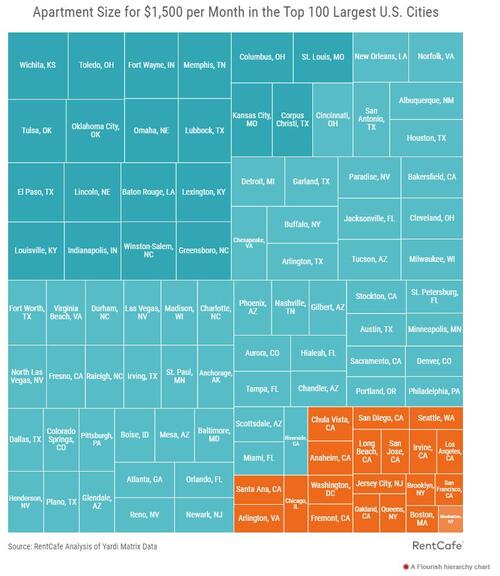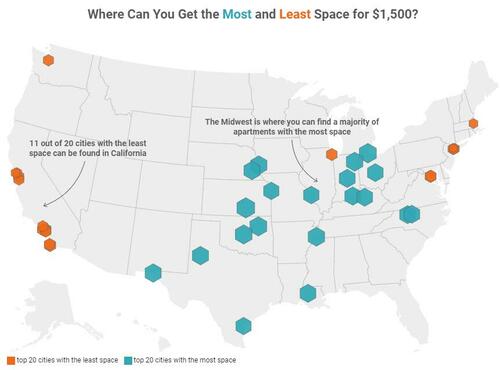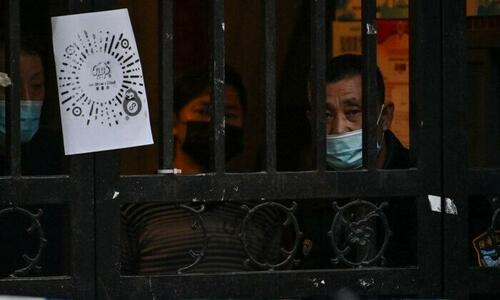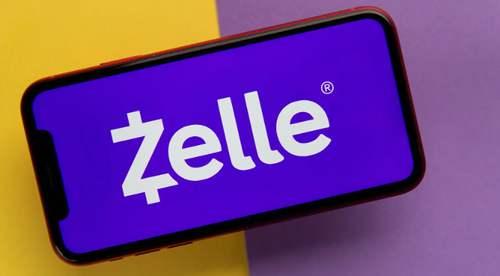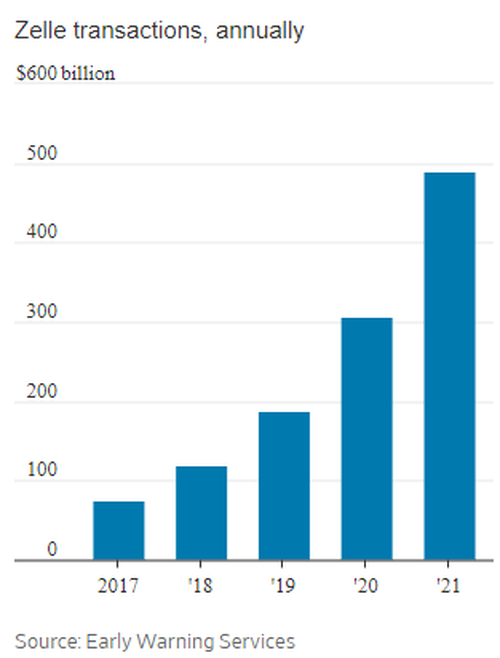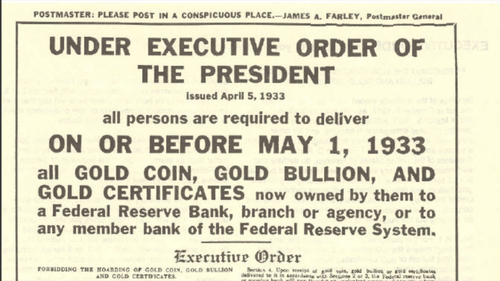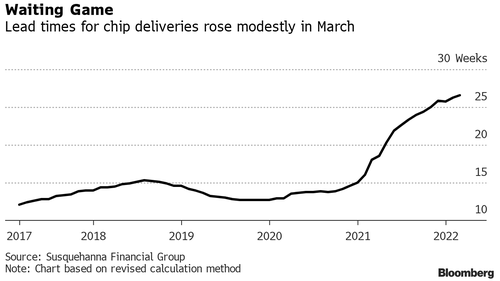Woke Medicine’s Got A Tricky Operation: Grafting ‘Systemic Racism’ Onto Hard Science
Authored b John Murawski via RealClear Investigations,
Just a few years ago, concepts such as “white supremacy,” “systemic racism,” and “structural intersectionality” were not the standard fare of prestigious medical journals. These are now the guiding ideas in a February special issue of “Health Affairs” that focuses on medicine and race.
Featuring nearly two dozen articles with titles such as “Racism Runs Through It” and “Sick and Tired of Being Excluded,” as well as a poem called “Identity,” the Washington, D.C.-based, peer-reviewed journal analyzes racial health disparities not through biology, behavior, or culture, but through the lens of “whiteness,” along with concepts such as power, systems of oppression, state-sanctioned violence, and critical race praxis – a sampling of terms that come up in the February issue.
Health Affairs, dubbed by a Washington Post columnist as “the bible of health policy,” represents something much more ambitious than woke virtue signaling. Its February issue reflects the effort of newly empowered “anti-racist” scholars to transform concepts that are still considered speculative and controversial – and some say unprovable – into scientific fact. This growing effort to document, measure, and quantify racism is being advanced by other high-profile publications, including The New England Journal of Medicine, The Journal of the American Medical Association, and Scientific American, which last year ran articles entitled “Modern Mathematics Confronts Its White, Patriarchal Past” and “Denial of Evolution Is a Form of White Supremacy.”
But this scientific aspiration faces major challenges. Science demands verification, testability, and replicability, whereas race is a social construct that can be difficult to separate from factors like class or culture, and explaining the data often remains dependent on academic theories about systemic racism. The articles in Health Affairs indicate that elevating the concept of systemic racism from moral certitude to scientific fact will require developing new tools and methods – and even more theories – in the face of skepticism and resistance from dissenters who view this direction in research as unscientific and ideological.
For example, five co-authors of the Health Affairs article “Improving the Measurement of Structural Racism to Achieve Antiracist Policy” observe that “there is a disconnect between the conceptualization and measurement of structural racism in the public health literature” – that is to say that acceptance of the idea outpaces the evidence for it.
In a Health Affairs paper titled “The Intellectual Roots of Current Knowledge on Racism and Health,” researchers from Harvard University and the University of Maryland argue that turning the study of systemic racism into a scientific enterprise will require the scientific community to embrace terminology and research that “can be unsettling to some”:
Until recently, the language and terminology of racism has been contested, often ignored, and viewed as not relevant to, or acceptable for, accounting for and intervening on racial and ethnic inequities in health.
The Harvard and Maryland scholars identify “the critical need for paradigmatic shifts that incorporate racism as a driver of inequities,” noting that “scientific language has the power to encourage normative standards.” In another article, a team of five scholars calls for “outlining specific methodological approaches that will move the field forward.”
Those pushing the effort expect that it will take years to build up a knowledge base and critical mass of scholarly research. If successful, it would empower the anti-racist movement with what advocates expect to be recognized as unimpeachable scientific authority that could be used to support a myriad of diversity and equity policies and interventions that are now being advocated as moral and polemical arguments by legal scholars, educators, historians, and journalists.
According to researchers now studying the relationship of medicine and race, racial inequalities in lifespans, health, income, and other metrics largely result from a single cause: cultural norms and unconscious beliefs that have the appearance of colorblindness but systematically privilege whites and males at the expense of groups that lack power and are oppressed.
Since the murder of George Floyd by a Minnesota police officer in May 2020, the cultural elites advocating this view – whether one calls it wokeness, systemic racism, critical race theory, or just the truth – are no longer marginalized outsiders. They are now in charge of many leading institutions that produce culture and certify knowledge through the media, publishing, universities, scholarly journals, foundations and advocacy groups, large K-12 school systems, and the sprawling apparatus of the federal government.
Although medical research informed by critical race theory has been conducted for decades, its broad embrace by the field’s highest echelons has been both sudden and expansive.
Alan Weil, Health Affairs’ editor-in-chief, committed the journal to “dismantling institutional racism” in January 2021. Scientists must question their assumptions about merit, quality, and excellence and make room for new research designs, methods, paradigms, and theories, Weil suggested, because traditional scientific protocols can make it impossible to study racism in the United States or recognize the problem within their own institutions.
“The reason it’s relevant is because if you decide only certain [research] methods are valid, then you have also decided that certain questions cannot be answered – they can’t even be asked,” Weil said in a phone interview. “I view this as a call to researchers to try to look at questions that they might have historically passed by — or viewed as ones that couldn’t be studied.”
The February issue of Health Affairs provides examples of how the new approach to research can be implemented to make the case for the pervasiveness of systemic racism in routine aspects of society.
The first of the nearly two dozen articles in the February issue sets the tone. The article describes an anti-racist initiative at the Mass General Brigham health system, where measuring and attaining equity – an ideal of equal health outcomes across racial groups – is now a core component of the institutional culture, like patient safety.
One thing that system leaders are not doing: studying whether or not racism actually affects health outcomes. “They believe that this fundamental question has already been answered,” the article states. The anti-racist initiative, called United Against Racism, will cost $40 million in the first year alone. “The initiative has no set end date,” the article states, and a system executive “expects their budget to increase every year.”
Another article urges the need to teach white Americans “the truth” about racial oppression, “despite the discomfort that it generates.” True racial progress requires the “understanding by White people of how they have benefited from systemic racism” – and how much more they stand to gain from social justice.
An article about the generational trauma of racism recommends respect for “Indigenous principles” and adopting a policy of federal reimbursement to traditional Native American healers who perform ceremonial and spiritual interventions.
There are also articles about black women in low-wage jobs in the healthcare sector; about black people living farther from rural hospitals than whites; about racial and minority Medicaid enrollees reporting significantly worse experiences; an article titled “Addressing the Interlocking Impact Of Colonialism And Racism On Filipinx/a/o American Health Inequities,” and more.
Medicine is just one of the major American institutions that has committed itself to equity. The seemingly overnight transformation has not been without its share of “cancellations” and controversy over such issues as prioritizing non-whites for Covid vaccines and suspending conventional academic standards to boost diversity.
As high-profile journals advance the systemic racism argument, other influential institutions are putting the contested ideas into practice.
The American Medical Association’s 86-page strategic plan for racial justice and health equity also challenges the morality of prevailing standards of quality and merit as a strategy of protecting the privileged domain of white males: The AMA condemns “equal treatment” and meritocracy as “malignant” white supremacist ideologies that obscure “true power and site of responsibility.”
The Association of American Medical Colleges, which co-sponsors the accrediting body for U.S. medical schools, is working to establish an advocacy culture in medical schools that haven’t yet gotten with the program voluntarily. The AAMC is expected to issue an update this year to its recommended professional “competencies,” the AAMC’s term for professional standards and best practices, that medical schools would be encouraged to adopt.
The proposed competencies include practicing self-reflection, “allyship,” and cultural humility, as well as attaining fluency in the “various systems of oppression,” to wit: colonization, white supremacy, acculturation, and assimilation.
For medical school faculty, the AAMC sets such professional expectations as teaching “how systems of power, privilege, and oppression inform policies and practices and how to engage with systems to disrupt oppressive practices.”
Not surprisingly, the handful of people who are willing to risk their careers and reputations to publicly critique anything to do with systemic racism and equity say the medical establishment has become captive to a leftist ideological agenda. These dissenters argue that “anti-racism” can be hard to distinguish from anti-science when it fixates on a single variable (race), selectively seeks out data to prove a hypothesis (confirmation bias), ignores plausible alternative explanations – and worst of all – silences criticism.
“Confounding science with political ideology is never good,” said Michael Shermer, the founding publisher of Skeptic magazine, whose monthly column was terminated at Scientific American after 18 years in a disagreement over what Shermer saw as woke ideology infecting the venerable publication.
“They’re saying we already know the answer – the answer is racism,” Shermer said in a phone interview with RealClearInvestigations. “We’re going to ignore all the other variables. They’re just reducing complex problems to one variable.”
This embrace of systemic racism is piggybacking on a long tradition of public health research that attributes population health disparities to social conditions, going back to a study by Friedrich Engels in the 1840s that said life expectancies in Liverpool, England, varied by the occupation of the city’s residents. For generations, however, the mainstream medical establishment understood racial health disparities to be a matter of genetics, behavior, culture, class – or a combination of these factors. Public health scholars, meanwhile, have been pouring forth hundreds of scholarly articles that attribute racial disparities in heart disease, diabetes, mental illness and other key metrics to societal conditions.
Health Affairs traces the evolution of racism as medical scourge through the release of “Unequal Treatment,” the groundbreaking 2003 Institute of Medicine (now National Academy of Medicine) report that said black people received inferior care in nearly every medical category. More recent is the 2019 declaration by the Pan American Health Organization, a regional arm of the World Health Organization, that structural racism is a key driver of health inequity, followed by the 2021 declaration from the Centers for Disease Control and Prevention that racism is a public health threat.
The Health Affairs articles in the February special issue rely on sociological theories, personal testimonials, and even poetry to augment traditional scientific protocols. Because there is no single correct way to measure structural racism, the five scholars “encourage the use of a theory-driven approach” to interpret data that would otherwise have to be treated as random or inconclusive.
For such scholars, theory is often the connective tissue that can link practices or events that, to the untrained eye, might seem too remote or speculative or simply unrelated. Within the narrative structure of a productive theory, facts fall neatly into place, and hidden patterns emerge. Thus, theories are the key to linking sociological phenomena separated by 50, 100, and even 200 years.
“Future studies should examine how modern health is shaped by a wider array of past forms of structural racism, such as slavery, lynching, unequal treatment in the criminal-legal system, forced sterilization, and other manifestations of racialized violence,” according to the quintet of academic scholars.
“Theory suggests inextricable links,” they say, “with historical forms directing, constructing, and molding contemporary structural racism.”
Researchers from Duke University and Florida State University argue that depriving African American felons of the right to vote affects the health of the entire community. The co-authors acknowledge they can’t directly prove that voting prohibitions for convicted felons harmed community health, but they noted that “there is a strong theoretical basis on which to expect that racialized disenfranchisement affects health.”
The article states that living in states with higher levels of “racialized felony disfranchisement” is “associated with” worse physical and mental health among black people, such as more symptoms of depression and functional limitations. The article concludes that “enacting laws to dismantle racialized felony disenfranchisement would likely improve the health of Black people and make progress toward achieving health equity.”
That claim includes footnotes that take the reader to three other articles – one based on “ecosocial theory,” another drawing on sociologist Bruce Link’s theory of “stigma power,” and another resting on the theory of “fundamental causes.” These articles provide the so-called theoretical basis for concluding that stripping felons of the right to vote affects community health. (The Link theory posited that “stigma is a form of power” used to control, exploit, and dominate people with mental illness.)
“Skeptics dismiss structural racism as a slippery concept for which robust empirical evidence documenting its effects is lacking,” the two researchers declare in their paper. “This study provides empirical evidence that makes it harder to dismiss the links between health and structural racism manifested as disproportionate Black felony disenfranchisement.”
Dr. Stanley Goldfarb, a kidney specialist who retired last year from the University of Pennsylvania’s Perelman School of Medicine, agreed to review this article for RCI. A former associate dean of curriculum at Penn’s medical school, Goldfarb said the Health Affairs article contains all the mandatory caveats about its methodological limitations, and then ignores them.
“This approach just drives me crazy. It’s basically finding associations and claiming it proves causality,” Goldfarb said. “They are going to find evidence for their theory because they are trying to do everything they can to prove their theory. That’s why they keep saying: We have to find the evidence.”
Alan Weil declined to discuss critiques of individual Health Affairs articles, and the lead author of the felon study and of the hospital study didn’t respond to RealClearInvestigations’ emails. But Weil, and others, say the anti-racist imperative in medicine is no more of an ideological “agenda” than the quest to discover a cure for cancer. Moreover, the advocates assert that the imperative to dismantle systemic racism is more urgent because it is more lethal than cancer.
“These sociopolitical exposures are exposures, just like we study in cancer research,” said Katherine Theall, a social epidemiologist and professor of public health at Tulane University. “And they’re even more powerful in many ways across a host of health outcomes.”
One way of summarizing this dispute is that traditionalists like Goldfarb are suspicious of scholarly activism as a corrupting influence on science, whereas researchers like Weil and Theall are suspicious of neutrality and colorblindness as an invisibility cloak for systemic racism.
“We want objective science, but there’s a point in public health, too, where we need to be doing more consequential work,” said Theall, a co-author of one of the Health Affairs articles. “We should be doing more advocacy, we should be trying to change these factors that we know matter for health.”
Weil describes researchers as “heroic” for trying to make sense of a complicated problem for which there is no single measure, but whose existence is beyond dispute.
“I don’t find the existence of systemic racism to be a controversial or difficult question to answer,” Weil said. “I see it around me all the time. I think the evidence base is so clear that I don’t want to spend a lot of my time trying to figure out whether or not the problem exists.”
Other articles in Health Affairs seek to document evidence of systemic racism in unexpected places. The team of scholars that includes Theall suggests that urban policing, specifically stop-and-frisk encounters, can lead to domestic violence and violent crime, as well as to poorer community health.
Theall said there are a number of theories scholars can “pull off the shelf” to analyze the effect of stop-and-frisk encounters on community health and local crime. But the causality is complicated, she said, because some effects, like heart disease and obesity, can take years to develop. Other effects, like rates of smoking or inadequate physical activity, could happen relatively quickly.
And taking this tack requires scholars to connect smoking for the alleviation of stress, or a reluctance to go outside for exercise, to police harassment – as opposed to connecting it to, say, gang terror. Theall said it takes years of effort and reams of studies to create a convincing case, patiently building evidence and refining methods.
“Our thesis is that even if you’re not a perpetrator of violence, for example, that level of community stress, of over-policing, is important for health,” Theall said. “And it’s important for that production of violence, whether that’s additional violent crime in the neighborhood or maybe the stress of living in a stressful neighborhood and what that might do for domestic violence.”
Theall’s article focuses on data from New Orleans. The article notes that the city had the fourth-highest murder rate in the United States in 2019 – a rate five times the national average.
Much of the action in Theall’s article takes place in the substratum of footnotes. The cited research relies on an array of sociological, psychological, and criminological theories that associate cops with harmful effects, including stress and distrust, the latter presumably causing residents not to call 911 for police assistance when they need it.
One of the articles cited by Theall (in footnote 27), in turn, cites previous articles that have been passed down from paper to paper. And it is here, burrowing into the footnotes, where one can find explanations and theories that speculate on how policing can lead to crime and poor health.
“Policing may also have epigenetic implications,” the reader learns, “whereby chronic exposure to stress from a particularly imposing police presence can lead to altered gene transcription/expression and epigenetic changes that can be passed on to subsequent generations.”
But with so many theories to choose from, could a researcher be tempted to cherry-pick a theory, or just make one up, to make the data tell a coherent story about how cops are escalating crime and violence and community illness?
“I don’t know the best answer for that, but I see where it can be a critique,” Theall said. “I would just think that’s probably not the route most researchers are taking in terms of analyzing their data, and then finding a theory to fit it.”
To the contrary, Theall believes some scholars are so scrupulous that they “overcontrol” for random factors and end up with research findings that are inconclusive. She said that because papers with negative findings tend not to get published as often as papers with splashy results – a research phenomenon called publication bias – a misimpression can result, that anti-racist scholars find racism everywhere they look.
Still, there is a theory in criminology called “the Ferguson effect,” developed after the 2014 shooting of Michael Brown in Ferguson, Missouri, that posits the opposite of Theall’s: that crime increases when cops reduce pro-active policing.
Chris Ferguson, a psychology professor at Stetson University in DeLand, Fla. (not related to the Ferguson effect theory), agreed to read Theall’s paper for RCI. He described this scholarship as a classic example of stubborn data being shoehorned into an uncooperative theory.
“This feels like an example of institutional capture, where you’re only good if you buy into the theory,” he said, “and therefore everything is seen through the lens of that theory, no matter how much you have to torture the data to make that happen.”
Ferguson is a hardcore skeptic of this sort of research. In a Quillette article last December, he described his resignation from the American Psychological Association as a protest against the organization’s embrace of wokeness. In the long run, Ferguson predicted, this research approach will prove unsustainable.
“We’re in this confirmatory mode where people try to find evidence and not look at alternative explanations,” he said. “That’s the best way to form a consensus – just exclude the scholars who disagree.
“What happens is, other scholars begin to pick at it and it falls apart,” Ferguson added. “Twenty years out this is going to look like a huge embarrassment.”
email: jmurawski@realclearinvestigations.com
Twitter: @johnmurawski
Tyler Durden
Wed, 04/06/2022 – 21:40
via ZeroHedge News https://ift.tt/UbC0vpI Tyler Durden

